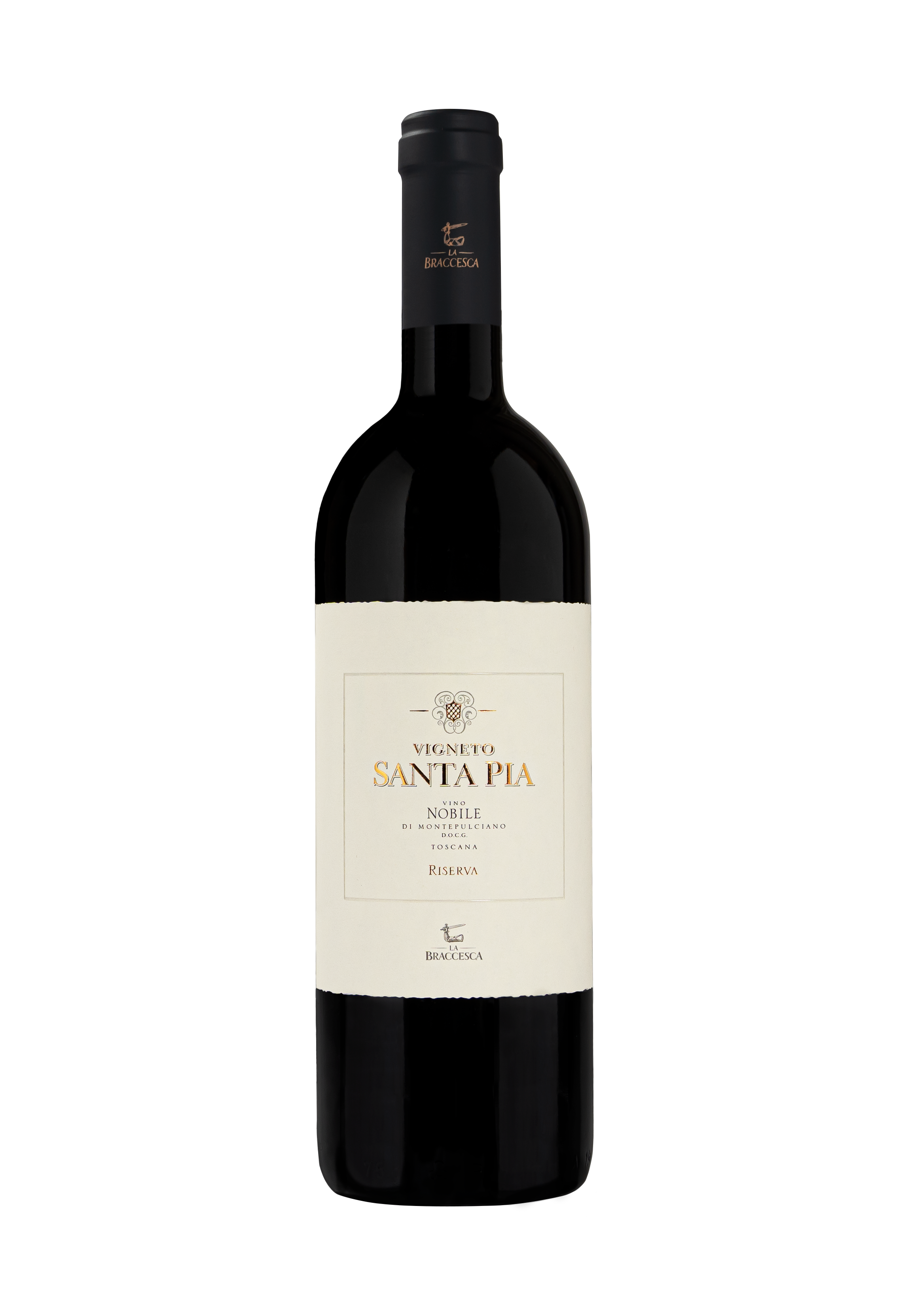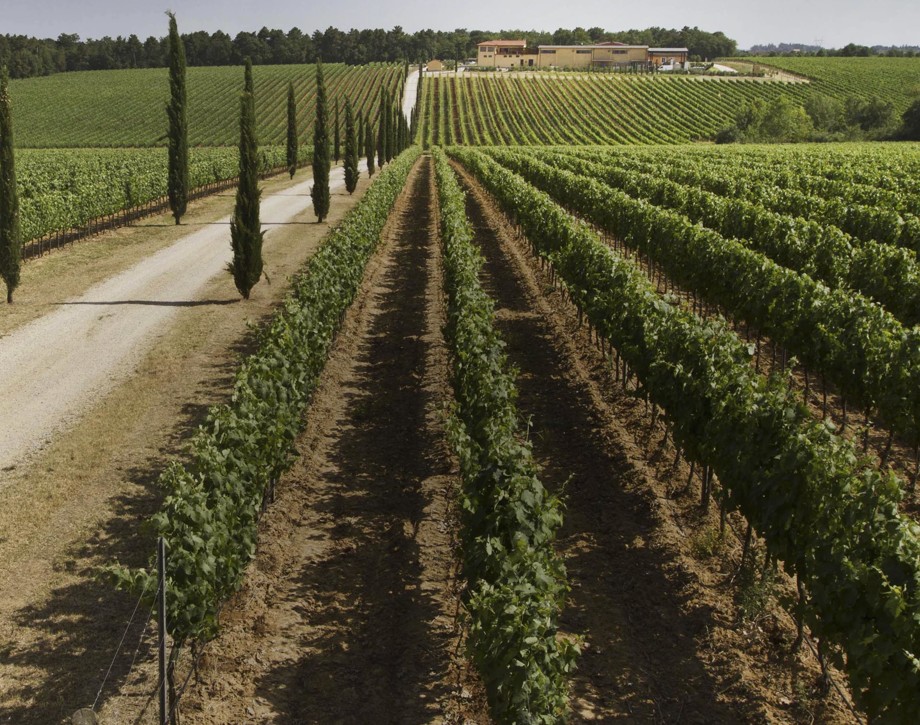Vigneto Santa Pia

Climate
The 2017 vintage was characterized by lower yields, yet grapes achieved optimal ripeness giving the wine excellent potential while intensifying typical varietal aromas. Winter weather was dominated by lower-than-average temperatures and limited precipitation. During the month of April, after bud break had already occurred, one frost event set in causing a reduction in overall yields but without any adverse effects on quality. Light rainfall in May was followed by a relatively hot and dry summer season with hot winds that persisted throughout the season. Sangiovese for Santa Pia was harvested the first week in October.
Vinification
Harvested grapes were brought to the cellar, destemmed and gently crushed. The must was transferred into stainless steel vats where alcoholic fermentation took place at a controlled temperature of 26-28 °C (79-82 °F) to preserve Sangiovese’s typical aromas. Maceration on the skins took place over a period of 20 days. The wine was then transferred into 500-liter tonneau barrels for malolactic fermentation and barrel aging for a period of approximately 12 months. The wine aged for 20 months in the bottle before being released.
Historical Data
The La Braccesca estate covers some 1255 acres (508 hectares) where once were located the holdings of the Bracci counts, who gave their name both to the property and its count of arms: an armor-clad arm holding a sword. The overall vineyard surface consists of 850 acres (340 hectares) and is divided into two blocks: the first, 575 acres (233 hectares) is situated on the border between Montepulciano and the neighboring township of Cortona. The second, instead, 255 acres (103 hectares) insize, arrives close to the city itself and includes three highly renowned sub-zones for the production of outstanding red wine: Cervognano, Santa Pia, and Gracciano. Santa Pia is produced from a 37 acre (15 hectare) vineyard situated in the site of the same name, located the terraces below the town of Montepulciano. Its unique soil, medium in texture and consistence, rich in stones and sand, have assisted the ambition to produce an elegant, but at the same time classic, example of Sangiovese, one capable of transmitting the a highly recognizable expression of this historic production zone. The first year of production of Santa Pia was the 2001.
Tasting Notes
Santa Pia 2017 is an intense ruby red color. Its nose immediately reveals its vintage: pleasant sensations of ripe red fruit and plum jam merge with aromas of tobacco and cloves. On the palate it’s elegant, refined and characterized by excellent freshness and mouth-filling tannins, soft and silky.

The Wine
Santa Pia is produced from a 15-hectare (37 acres) vineyard in an area called Santa Pia, located on the ridges just below the town of Montepulciano. This particular area has sandy loamy soils rich in rocky deposits known as “scheletro” that allow the Antinori’s to create an elegant yet traditional expression of the Sangiovese grape that reflects the characteristics of this historic winemaking area. The first vintage to be produced was 2001.

Climate
The 2017 vintage was characterized by lower yields, yet grapes achieved optimal ripeness giving the wine excellent potential while intensifying typical varietal aromas. Winter weather was dominated by lower-than-average temperatures and limited precipitation. During the month of April, after bud break had already occurred, one frost event set in causing a reduction in overall yields but without any adverse effects on quality. Light rainfall in May was followed by a relatively hot and dry summer season with hot winds that persisted throughout the season. Sangiovese for Santa Pia was harvested the first week in October.
Vinification
Harvested grapes were brought to the cellar, destemmed and gently crushed. The must was transferred into stainless steel vats where alcoholic fermentation took place at a controlled temperature of 26-28 °C (79-82 °F) to preserve Sangiovese’s typical aromas. Maceration on the skins took place over a period of 20 days. The wine was then transferred into 500-liter tonneau barrels for malolactic fermentation and barrel aging for a period of approximately 12 months. The wine aged for 20 months in the bottle before being released.
Historical Data
The La Braccesca estate covers some 1255 acres (508 hectares) where once were located the holdings of the Bracci counts, who gave their name both to the property and its count of arms: an armor-clad arm holding a sword. The overall vineyard surface consists of 850 acres (340 hectares) and is divided into two blocks: the first, 575 acres (233 hectares) is situated on the border between Montepulciano and the neighboring township of Cortona. The second, instead, 255 acres (103 hectares) insize, arrives close to the city itself and includes three highly renowned sub-zones for the production of outstanding red wine: Cervognano, Santa Pia, and Gracciano. Santa Pia is produced from a 37 acre (15 hectare) vineyard situated in the site of the same name, located the terraces below the town of Montepulciano. Its unique soil, medium in texture and consistence, rich in stones and sand, have assisted the ambition to produce an elegant, but at the same time classic, example of Sangiovese, one capable of transmitting the a highly recognizable expression of this historic production zone. The first year of production of Santa Pia was the 2001.
Tasting Notes
Santa Pia 2017 is an intense ruby red color. Its nose immediately reveals its vintage: pleasant sensations of ripe red fruit and plum jam merge with aromas of tobacco and cloves. On the palate it’s elegant, refined and characterized by excellent freshness and mouth-filling tannins, soft and silky.

Tenuta La Braccesca
The estate’s name comes from the historical farm that once stood there, owned by the Count of Bracci, whose coat of arms appears on the estate’s logo; an arm covered with armor brandishing a sword. Marchesi Antinori acquired the estate in 1990. The property extends over an area of 508 hectares (1255 acres) and the vineyards cover an area of 340 hectares (840 acres) divided into two blocks: the first is 366 hectares (904 acres) of which 237 (585 acres) are planted with vineyards and is located on the border between the cities of Montepulciano and Cortona. The other block is 142 hectares (350 acres) of which 103 (254 acres) are planted with vineyards, it extends all the way to Montepulciano encompassing three of the most famous parcels of land known for the production of great red wines: Cervognano, Santa Pia and Gracciano.

Soil
Sandy loam rich in very fine gravel.
















